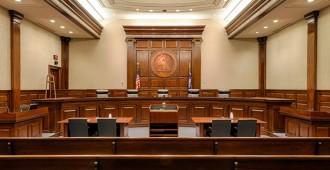February 23, 2016
Federal Circuit Issues a Rare Reversal on Behalf of Patent Owner in IPR
Yesterday, the Federal Circuit decided five appeals from as many IPR’s filed by Patent Owner PPC Broadband involving claim construction issues, most of which were decided in PPC’s favor. In a first appeal (2015-1364) taken from IPR2013-00342, the court agreed with PPC and held that the Board’s construction of “reside around” was unreasonably broad because the Board selected the broadest of several dictionary definitions (in the immediate vicinity of; near) and disregarded the definition (encircle or surround) that was consistent with the context provided by the claims, the specification, and the patented technology. This holding can be particularly useful to Applicants during prosecution when Examiners applying BRI select the broadest dictionary definition of a claim term and ignore the definition that is consistent with Applicant’s use of the term. The court also rejected the Board’s conclusion that the claim term “reside around” should be interpreted to mean something other than “encircle or surround” since the claim preamble recited a different term “surrounded” than the claim term “reside around.” The court clarified that such differentiation is less applicable where, as here, the preamble merely sets forth the general nature of the claimed invention and is not used to limit the claim.
Nonetheless, Appellee-Petitioner Corning argued that the Board’s interpretation should be upheld because it covers many of PPC’s embodiments. PPC’s numerous claims of varying scope, disclosure of various embodiments, and consistent use of the term “around” in the patent came to PPC’s rescue. Citing these facts, the court rejected Corning’s argument that the broadest reasonable construction is the one that covers the most embodiments. Instead, the court emphasized that the BRI must be reasonable in light of the claims and specification and that the construction covering more embodiments than another does not render that construction reasonable.
In other consolidated appeals (2015-1361, 2015-1366, 2015-1368, and 2015-1369), while the court affirmed some and rejected some of the Board’s interpretations, the court offered guidance regarding objective considerations, particularly commercial success, which can help patent owner. PPC alleged, and presented multiple declarations in support, that its connectors are commercial embodiments of the claimed connectors. Corning did not dispute the allegation. Yet the Board found that PPC did not present persuasive evidence of commercial success. The court held that where, as here, the patentee has presented undisputed evidence that its product is the invention disclosed in the challenged claims, it is error for the Board to find to the contrary without further explanation, which was missing here. The court held that since the evidence shows that PPC’s connectors are the invention disclosed and claimed in the patent, it presumed that any commercial success of these products is due to the patented invention. The court noted that while such a presumption won’t apply in ex parte context, where the PTO cannot gather evidence supporting or refuting the patentee’s evidence of commercial success, it applies in contested proceedings like IPRs, where the petitioner has the means to rebut the patentee’s evidence.



































